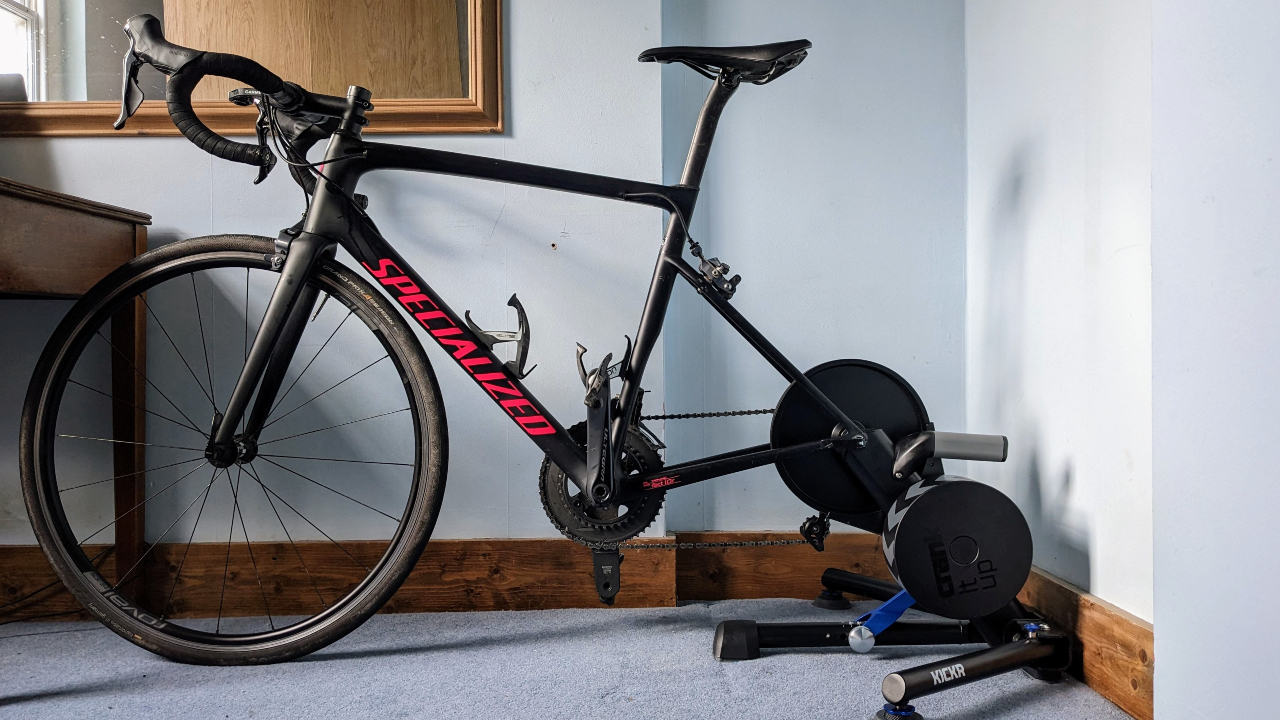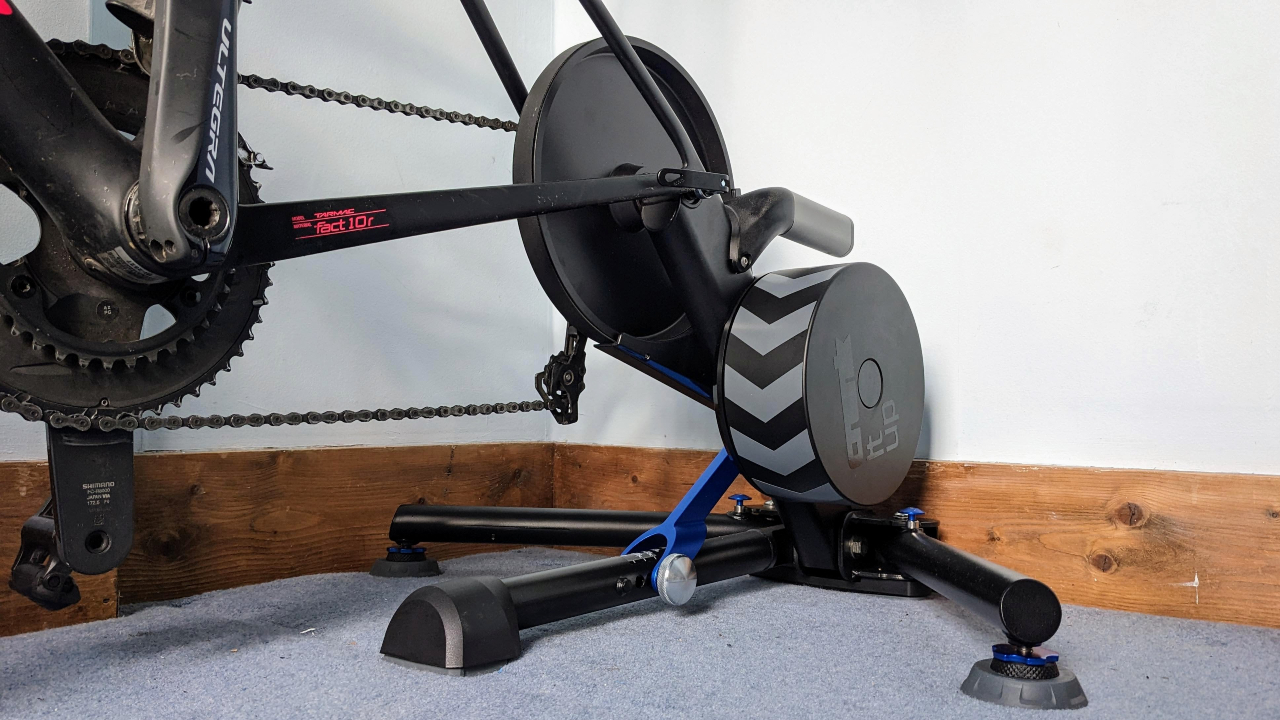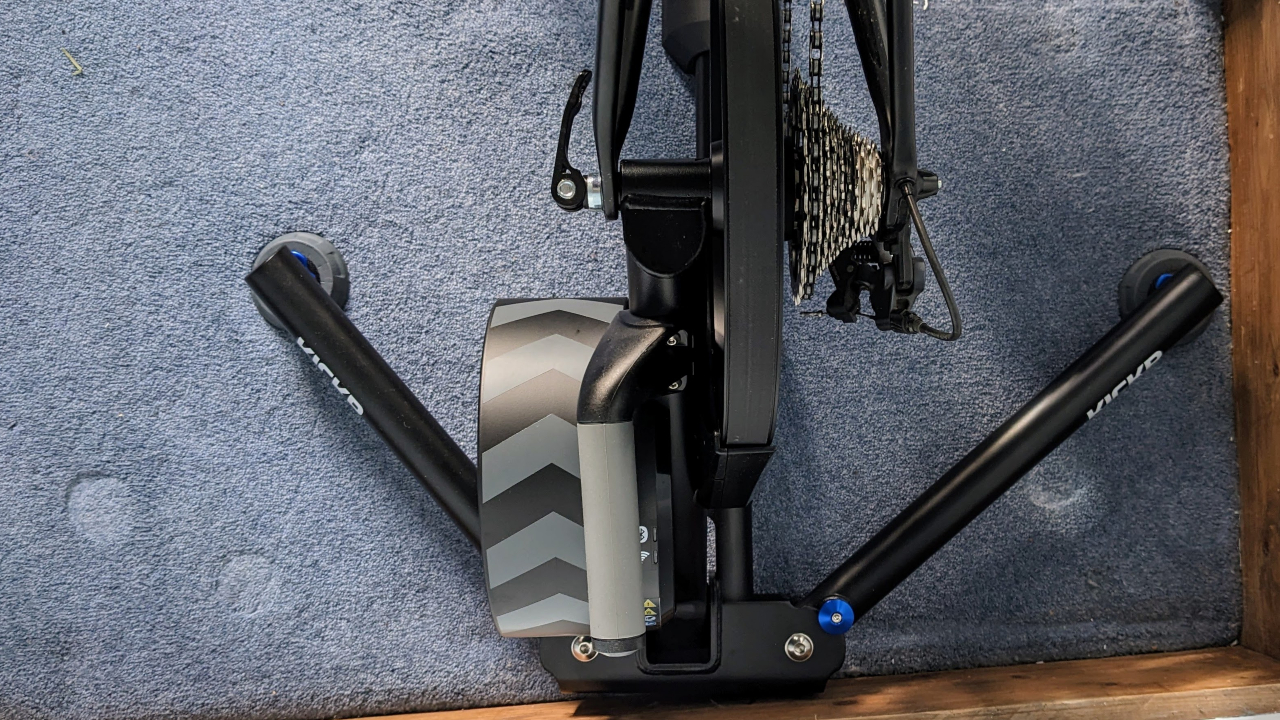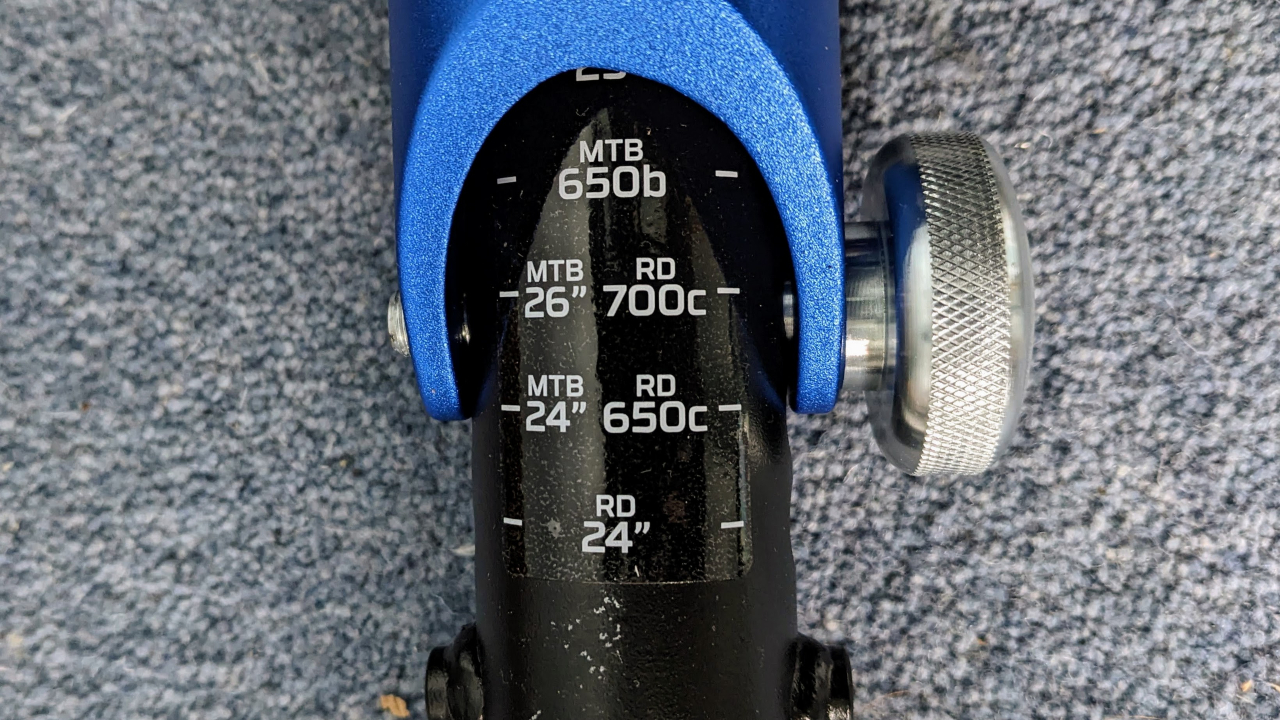
If you look back at the cycling technology and gear of 2018, it’s apparent that much has changed in the intervening years. Most new road bikes come with disc brakes, tubeless-ready tires and can handle gravel-riding roughage, while top-tier lights come with cameras as standard.
Look at the best turbo trainers, though, and very little appears to have changed. Brands like Wahoo and Tacx (now owned by Garmin) have released a couple of iterations of the Kickr Bike and Neo Bike smart training bikes respectively. Moves have been made to improve the indoor riding experience (see the Wahoo Kickr Rise or Elite’s Rizer) via gradient simulators but updates to flagship direct drive turbo trainers have been minimal.
The Wahoo Kickr V6 is the latest release that fails to break this pattern. It looks identical to the fifth version it is replacing, which itself was a near-carbon copy of 2018’s V4. However, though there have only been minor improvements, the V6 doesn’t feel dated. In fact it provides one of the best turbo training experiences available.
Wahoo Kickr V6: Price And Availability

The Wahoo Kickr V6 was released in September 2022 and costs $1,300 in the US and £1,099.99 in the UK. The RRP is $100/£100 more than the Wahoo Kickr V5 was on release and tips the Kickr into four figures for the first time.
Wahoo Kickr V6 Vs Wahoo Kickr V5
The biggest difference between the Wahoo Kickr V6 and its predecessor is that it now comes with Wi-Fi. This allows you to connect the trainer to your internet router, minimizing the risks of mid-ride drop-outs that can be an issue when piggybacking on a Bluetooth or ANT+ connection between the trainer and your chosen device.
In the past, I’ve experienced these issues, which can be frustrating when you’re mid-workout or in an e-race (such as those on Zwift), where signal loss can send you to the back of the pack. During testing of the Kickr V6, I didn’t have any issues when setting up or with a loss of connectivity.
Otherwise, the changes to the V6 are minimal. There’s the inclusion of the ERG Easy Ramp, which is also seen on the Kickr Bike V2. Essentially, if you have to pause a workout for any reason, you now have 10 seconds to ramp back up to the power when you resume rather than grinding away at an impossibly hard resistance. There is also an odometer, which logs the turbo’s total use.
In other regards, the V6 is the same as the V5. It has the same maximum power output (2,200W), power accuracy (+/- 1%), maximum gradient simulation (20%) and retains the Axis feet (allowing for 5° of side-to-side movement) that were introduced last time around.
The Set-Up

The Kickr V6 is straightforward to set up and is ready to go out of the box if you have an 11-speed road bike with quick-release wheels. There are only minor adjustments required if you have a mountain bike or thru-axles (common on new bikes with disc brakes).
To start riding, you unfold the two side legs before adjusting the height of the trainer using the bike and wheel size markers as a guide. This is also the time to switch out the Axis feet if required, replacing them with one of the two sets included in the box that allow you to tailor the experience depending on your weight. After this, you remove the rear wheel from your bike, connect its chain to the Kickr’s pre-installed cassette and slot the frame’s drop-outs onto the turbo trainer’s lugs.
Unlike its Tacx Neo 2T rival, the Kickr V6 needs to be plugged into the mains to work. Once switched on, open the Wahoo Fitness smartphone app, add the Kickr to your profile and fill in your router’s details to get the trainer paired to your home Wi-Fi.
The pre-installed cassette works with Shimano and SRAM 11-speed drivetrains (count the number of cogs on your bike’s back wheel if you’re not sure how many gears you’ve got). If your bike is more than 10 years old, you’ll probably need to swap the pre-installed cassette for one that is compatible with your set-up. Also, if using a mountain bike (or even a 1x gravel bike), the number of teeth on the stock cassette won’t leave you with a lot of low-end range, so it will be worth swapping it for the same cassette that you have on your bike if you want to be able to climb hills in simulation mode. If you’re unsure about any of these then contact a bike store.
The Ride
In terms of hardware, the Kickr V6 is identical to its predecessor and feels exactly the same to ride. I was a fan of the V5—and if it ain’t broke, why fix it? Its 16lb (7.25kg) flywheel is the driving force behind its realistic ride feel, while the Axis feet enabled enough side-to-side movement to ensure I didn’t feel like I was fighting against the bike during my out-of-the-saddle efforts.

I tested the turbo trainer in simulation mode on Zwift and ERG mode on TrainerRoad and was impressed with its performance on both. When climbing a virtual hill, the resistance smoothly increased and decreased in line with the on-screen gradient, while it accurately held power without wavering during interval workout sessions. I also used the latter as an opportunity to test out the ERG Easy Ramp and it worked without a hitch.
The only thing its main rival (the Tacx Neo 2T) can offer that the Kickr V6 can’t is the ability to simulate different riding terrains, where haptic feedback makes it feel like you’re spinning your way across cobblestones or gravel. From personal experience, this is a gimmick: while it might add to the immersive nature of a virtual training platform like Zwift, it’s hard to escape the reality that you’re riding indoors.
Is The Wahoo Kickr V6 Worth It?
Wahoo isn’t alone in putting prices up, but, on paper, it’s hard to argue that the improvements are worth the additional $100/£100.
The Kickr is still Wahoo’s top-of-the-range turbo trainer, but for $500/£500 less, you get the Kickr Core—another direct drive smart turbo trainer that is tough to beat when it comes to value for money. At the other end of the scale, if you want a truly immersive indoor training experience, the latest Kickr Bike V2 ($3,999.99/£3,499.99) is a great way to splash the cash.
When compared with other brands’ top-of-the-range direct drive turbo trainers on price, the Wahoo Kickr V6 is in the middle of the pack. Where it leads the way is in being the only one that comes pre-installed with a cassette (saving you additional outlays if you have an 11-speed road bike) and the only release currently available with built-in Wi-Fi.
Its biggest competitor on value is its predecessor. The Kickr V5 is still available online and if connecting to your home internet is a deal-breaker, it’s possible to buy a Kickr Direct Connect (£79.99) and plug the trainer directly into your router.
The Wahoo Kickr V6 is at the top of the best turbo trainer pile. It combines a brilliant, pro-level package that will last you years—and its specs mean you’ll never outgrow it. This is its downfall as well, though. Wahoo hasn’t moved things on dramatically since the 2018 V4 and if you already own one of these, or a slightly newer V5, there’s little need to upgrade.







